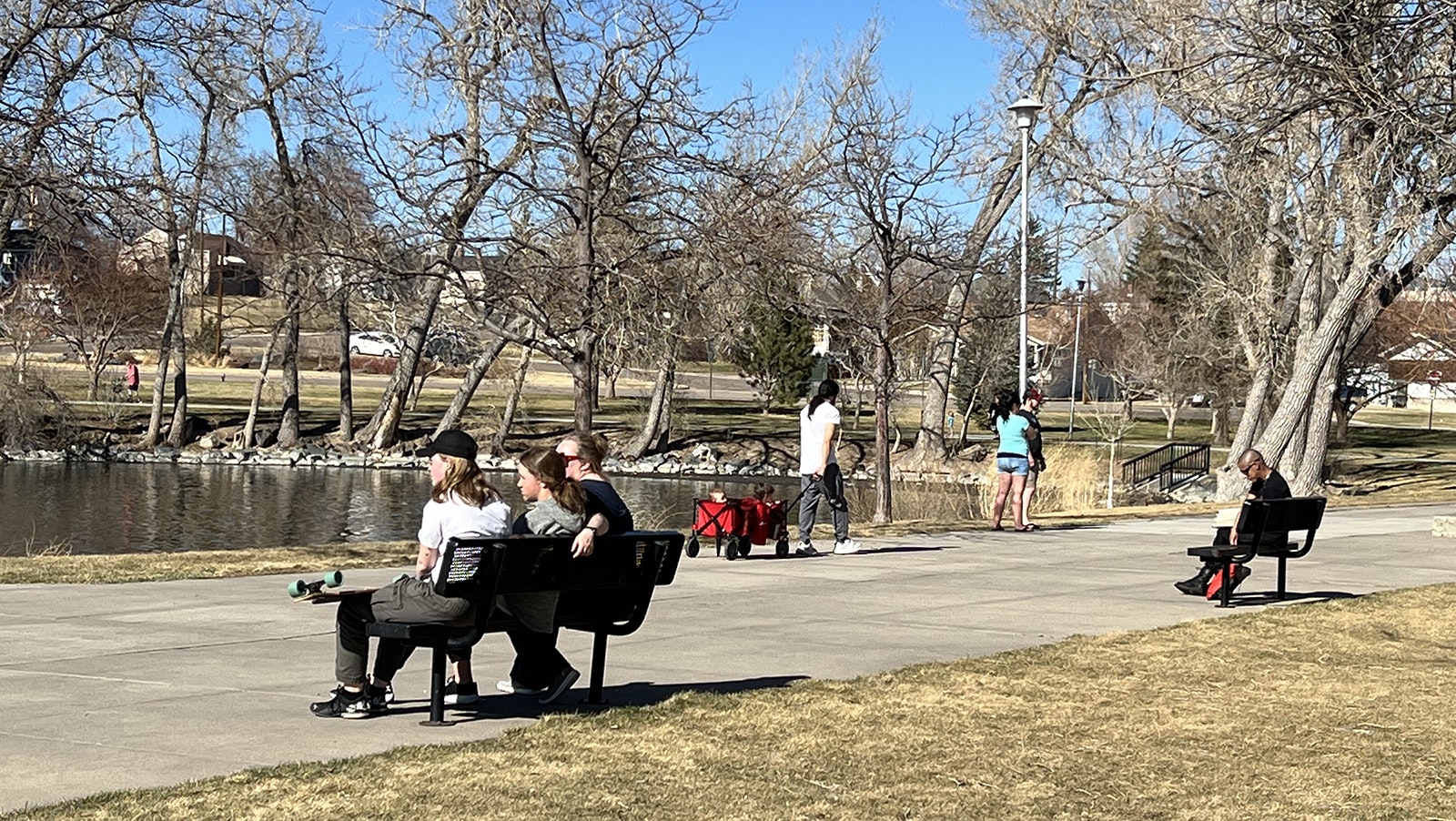When it comes to Wyoming’s weather, expect the unexpected. However, there are certain truisms that new residents should learn sooner rather than later.
Several days of unseasonably warm weather last week were followed by a chaotic cold front that dropped temperatures over 50 degrees and dumped several inches of snow across Wyoming. It was the kind of spring storm that reminds us winter isn’t over until it’s over.
Cowboy State Daily meteorologist Don Day has a message for new Wyoming residents and natives who get restless for summer — don’t be fooled.
“When we hit 70 and 80 degrees (in April), it means absolutely nothing around here,” he said. “It's nice, but it means nothing in terms of when winter’s over and summer’s here.”
History's Highs And Lows
There are places in the United States where crossing a certain high-temperature threshold means there’s no going back in terms of winter weather. Wyoming isn’t one of those places.
According to the National Weather Service (NWS) Office in Riverton, Greybull broke a temperature record this year by reaching 80 degrees on March 27. That’s the earliest it’s gotten that warm in Greybull since 1998.
Lander has been keeping temperature records since 1891. The earliest it reached 80 degrees in Lander was April 17, 1994.
Historically, the first 80-degree day in Wyoming could come between late March and mid-May, depending on location and elevation. However, crossing that threshold doesn’t provide any guarantees.
A week after it reached 80 in Greybull, the high temperature was 44 degrees after a Canadian cold front swept across Wyoming. Despite several days of summer-like temperatures, several inches of snow fell over the entire Bighorn Basin.
Day said that can be attributed to the legendary volatility at this time of year. Wyoming residents might have been caught off guard by the swing in extremes, but meteorologists weren’t.
“It was very well-advertised,” he said. The likelihood of what would happen became clear a week before it happened. The NWS offices in Riverton and Cheyenne were putting out statements, and I was warning people that the forecast was not to be trusted beyond four or five days. From the weather side of things, nobody was caught off guard.”
A Mindset Of “Mistrust”
Day’s oft-stated truism is that Wyoming isn’t done with winter weather until Mother’s Day has come and gone. That leaves a long period of meteorological madness between the start of spring and the second Sunday in May.
During this period, Day recommends that people check local and regional forecasts more frequently. He believes one of the reasons why last week’s storm was so disruptive is that people were too trusting of extended forecasts that changed when they weren’t looking.
“I think a lot of people tend to look at five or 10-day forecasts,” he said. “If they don't see the big snow icon on Days Four, Five, and Six, or see a 10-day forecast with no weather in it, they don't go back and check. But, in reality, five days is as good as we can do at this time of year.”
Day chalks this up to the occasional unreliability of computer modeling. Most meteorologists, including Day, use data from long-range computer modeling to inform their daily and extended forecasts.
However, overreliance can lead to inaccurate assumptions. Day believes weather modeling often leads to broad assumptions about what the weather will do, even though the same weather system manifests very differently from one place to another across Wyoming.
“The weather is never even in Wyoming,” he said. “It's never the same for everybody. The forecast depends on where you are. All we can do is try to hit what overall trends will be and try our best on the timing.”
Day tries to implement the day-to-day changes in his local forecasts and lets historical data inform his Wyoming outlooks. He recommends Wyomingites stay diligent about checking daily forecasts at this time of year so they can make more informed decisions about the weather.
“It becomes a mindset,” he said. “It’s a little bit psychological, but sometimes the computer modeling performance is poor, and there can be significant changes within a week.”
Seasonal Degrees Of Separation
Nevertheless, there’s enough precedent to know that the first days with summer-like temperatures are far from “the first days of summer.” They're as reliable of an indicator of summe as Lander Lil is of spring.
Lifelong Wyomingites might know this (even if everyone’s weather memory tends to be short). Day wants to extend this seasonal message to recent and future transplants who make decisions based on the arrival of these daytime temperatures.
“When we get two or three days of 70 and 80-degree temperatures,” he said, “it’s easy for people to rest on their laurels, especially if they haven’t lived or grown up around here. But it means nothing.”
Andrew Rossi can be reached at arossi@cowboystatedaily.com.





